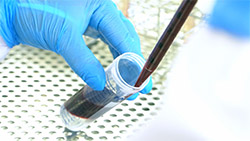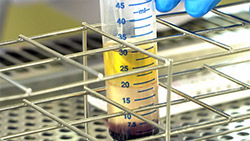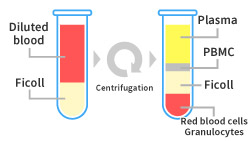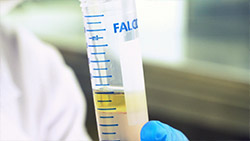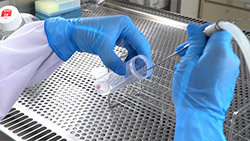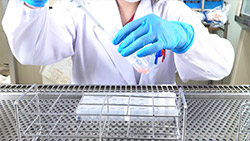Peripheral blood mononuclear cells (PBMC) consist of various immune cells such as T cells, B cells, NK cells, monocytes, and dendritic cells, etc. Recently it has attracted attention as it is used for many purposes such as immunological research and development of vaccines.
In general, PBMCs are separated and collected from fresh blood by density-gradient centrifugation. Layering blood on density solution and collecting/washing separated PBMCs is performed manually, and it requires a high level of skill to obtain PBMCs with high quality and homogeneity. Adequate staff organization for minimizing the duration between blood collection and PBMC isolation is necessary to obtain PBMCs that closely reflect in-vivo conditions.
Mediford Corporation has a long history of experience in PBMC isolation in clinical trials. We pick up blood samples from study sites, and highly skilled staffs perform the PBMC isolation process at the GLP laboratory located in Itabashi, Tokyo. In addition to the standard process, we can utilize other simpler isolation technologies such as Vacutainer CPT from BD, Leucosep tube from Greiner, SepMate from STEMCELL Technologies.
With isolated PBMCs, we can conduct analysis by flow cytometry, ELISpot, and qPCR. In addition, we can conduct long-term storage for future studies, or shipment to other laboratories.
A case study of PBMC isolation with ficoll is shown below.
A case study of PBMC isolation with ficoll
Please contact us if you are interested in watching a video explaining the PBMC isolation process from blood samples.






